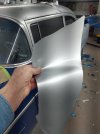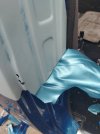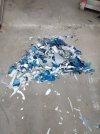RosharonRooster
Promoted Users
Within the next few weeks here I'm going to start stripping some panels and get them in epoxy. Some panels are original 60yr old lacquer paint without rust. Some panels have "patina" but don't need any patch panels. What would be the best way to get these down to metal?. 80 grit DA? Lacquer thinner and red pad by hand? Media blast?. I'm open to options , I want longevity in this paint job.



